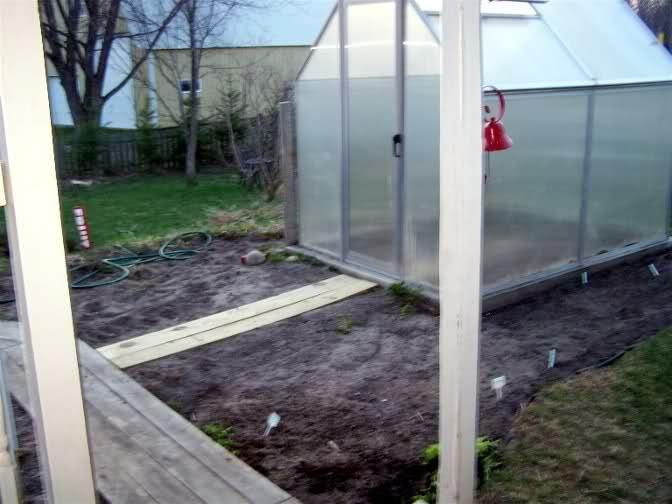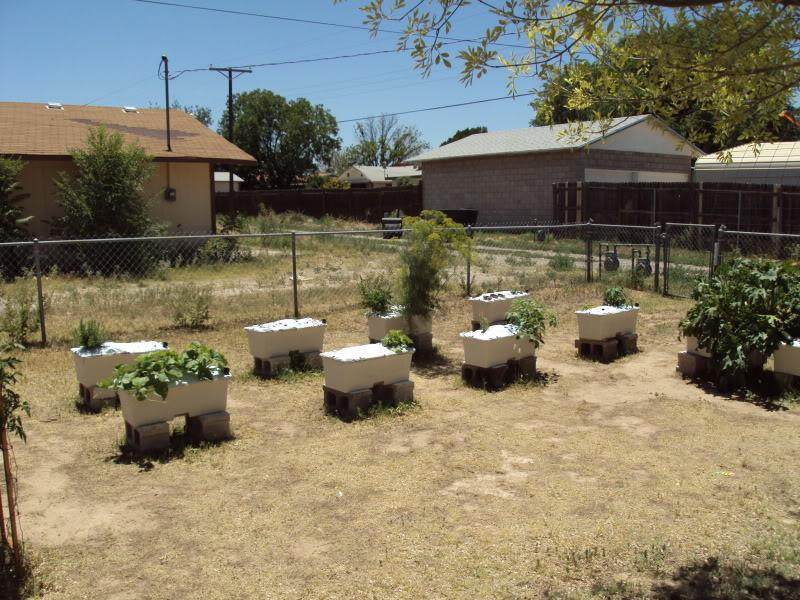Lazylocavores,
Good question. Everyone living in an urban area has a different situation regarding available space in which to garden, so there are no hard, fast rules. People also have different situations regarding how much time/attention they can give to a garden. However, when I think about growing in limited space a few different ideas come to mind:
-Container gardening - There are a ton of books out there on container gardening. If people have room for a container (anywhere from a window box to a half barrel) they can grow something. Containers often dry out faster than gardens planted in the ground, so this can be an issue for folks who work long hours. In that case either a small drip irrigation system with a timer or choosing to grow drought tolerant plants are both good ideas. In fact, I like to use containers for a lot of Mediterranean herbs that are fairly drought tolerant (rosemary, sage, oregano, etc.). This keeps them close to the kitchen when I need them and they are a bit more forgiving when you work late and can't water them as often. Container gardening and indoor worm composting can make a great combo in terms of a fertility regime.
-Community gardening - Many places (including West Seattle) have community gardens where enthusiastic gardeners can get a plot. These programs are wonderful and they provide space for people to make a lot of food. It is important to make sure your community garden plot is close enough to your home to receive proper attention (too far and we know we won't be as attentive as we should). A big challenge for basement apartment dwelling folks is doing starts to transplant into their garden plots later. Recently, this problem was tackled by some folks in the Seattle area who started a 'Plant Start CSA'. For the price of a subscription you will get plant starts appropriate to the season delivered throughout the year. Pretty spiffy!
-Guerilla gardening - Lots of folks are getting into the idea of planting food on the sly. If you ever notice a squash plant growing amongst the pieris and arbor vitae at your bank, a guerilla gardener has probably been at work. The principle here is that there is land available all over the place. It is often just filled with ornamentals and not used terribly efficiently. The guerilla gardener will throw seed balls, plant veggie starts, and plug in cuttings in places where they will (hopefully) go unnoticed until they come back for a harvest. There can be a lot of heartbreak when you go this route when all your kales get consumed by a lawn mower instead of you, so if you choose to guerilla garden my advice is to make it look official. The folks that tend landscapes will often assume that a planting that looks like the other plantings is supposed to be there. In other words if you plant your kales in an aesthetically appealing way out of the mow zone, they will be more likely to survive.
-Not-so-guerilla gardening - There is also the idea of just asking. With the idea of edible landscaping on the rise, it seems that one without access to land could simply ask neighbors if they would mind having a garden on the sunny side of their lawn. You could do the work and provide them with some fresh food. Everyone wins. Not everyone will say yes, but it only takes one. Besides, you'll get to meet a bunch of your neighbors and work on building community, which benefits everyone in the end.
Other folks will probably mention rooftop gardening & vertical gardening. However, I believe that there is land available in most places that is easier (and less energy intensive) to garden than rooftops and concrete walls. Often times the challenge isn't available land, but gaining access to available land. Vacant lots, neighbor's lawns, public parks, etc. all provide potential access to land. I imagine that with enough gumption, one could find a patch of dirt just about anywhere. I'd still keep my rosemary in a pot outside my kitchen window, though. After all, that's where I'd use it.
On the urban farming front, there is an organization called Growing Power (
http://www.growingpower.org/) based in Milwaukee, Wisconsin that I think enthusiastic urban growers should check out. I visited their operation this winter and I was quite impressed. On 2 acres in the inner city, the founder, Will Allen, grows enough food to run a CSA and market. He has chickens, goats, ducks, & turkeys. He has six greenhouses and produces greens for local sale all winter. They are raising tilapia and lake perch in greenhouse
aquaculture systems. On top of all that they offer workshops on a variety of topics from commercial urban ag (in other words earning a living farming in the city) to urban food security. Will Allen was a recipient of a MacArthur Foundation Award this year. The first photo below is of a greenhouse where they were growing salad greens in January. The space was heated only by the
compost piles you see in the corners. The second picture is of one of their aquaculture pools. Check them out if you ever have a chance.
Either way, you can do a lot with a little. Often times it just takes a bit more creativity.
Cheers!
Dave

 1
1













































































































 2
2






























